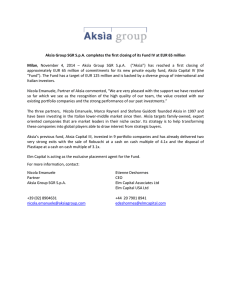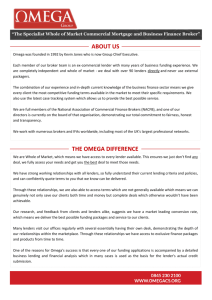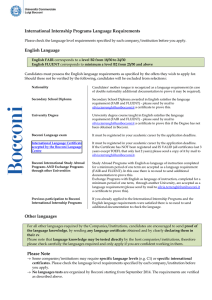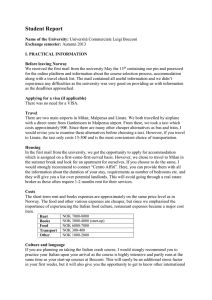Sensitivity Analysis of Large Spreadsheet Models for Industrial
advertisement
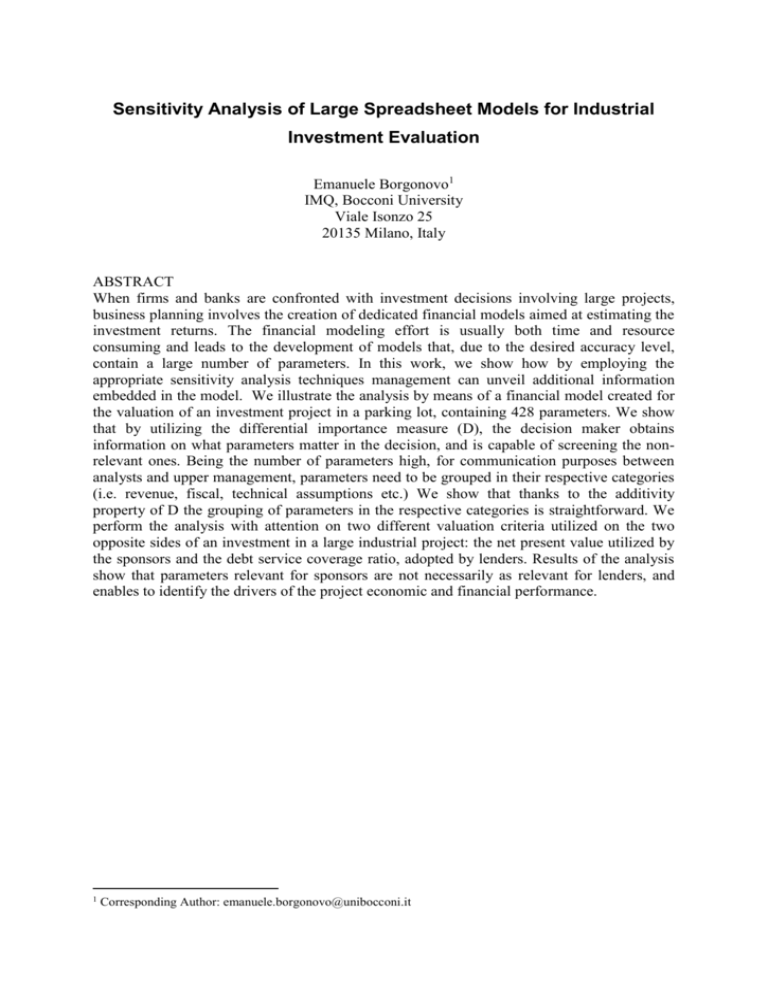
Sensitivity Analysis of Large Spreadsheet Models for Industrial Investment Evaluation Emanuele Borgonovo1 IMQ, Bocconi University Viale Isonzo 25 20135 Milano, Italy ABSTRACT When firms and banks are confronted with investment decisions involving large projects, business planning involves the creation of dedicated financial models aimed at estimating the investment returns. The financial modeling effort is usually both time and resource consuming and leads to the development of models that, due to the desired accuracy level, contain a large number of parameters. In this work, we show how by employing the appropriate sensitivity analysis techniques management can unveil additional information embedded in the model. We illustrate the analysis by means of a financial model created for the valuation of an investment project in a parking lot, containing 428 parameters. We show that by utilizing the differential importance measure (D), the decision maker obtains information on what parameters matter in the decision, and is capable of screening the nonrelevant ones. Being the number of parameters high, for communication purposes between analysts and upper management, parameters need to be grouped in their respective categories (i.e. revenue, fiscal, technical assumptions etc.) We show that thanks to the additivity property of D the grouping of parameters in the respective categories is straightforward. We perform the analysis with attention on two different valuation criteria utilized on the two opposite sides of an investment in a large industrial project: the net present value utilized by the sponsors and the debt service coverage ratio, adopted by lenders. Results of the analysis show that parameters relevant for sponsors are not necessarily as relevant for lenders, and enables to identify the drivers of the project economic and financial performance. 1 Corresponding Author: emanuele.borgonovo@unibocconi.it
